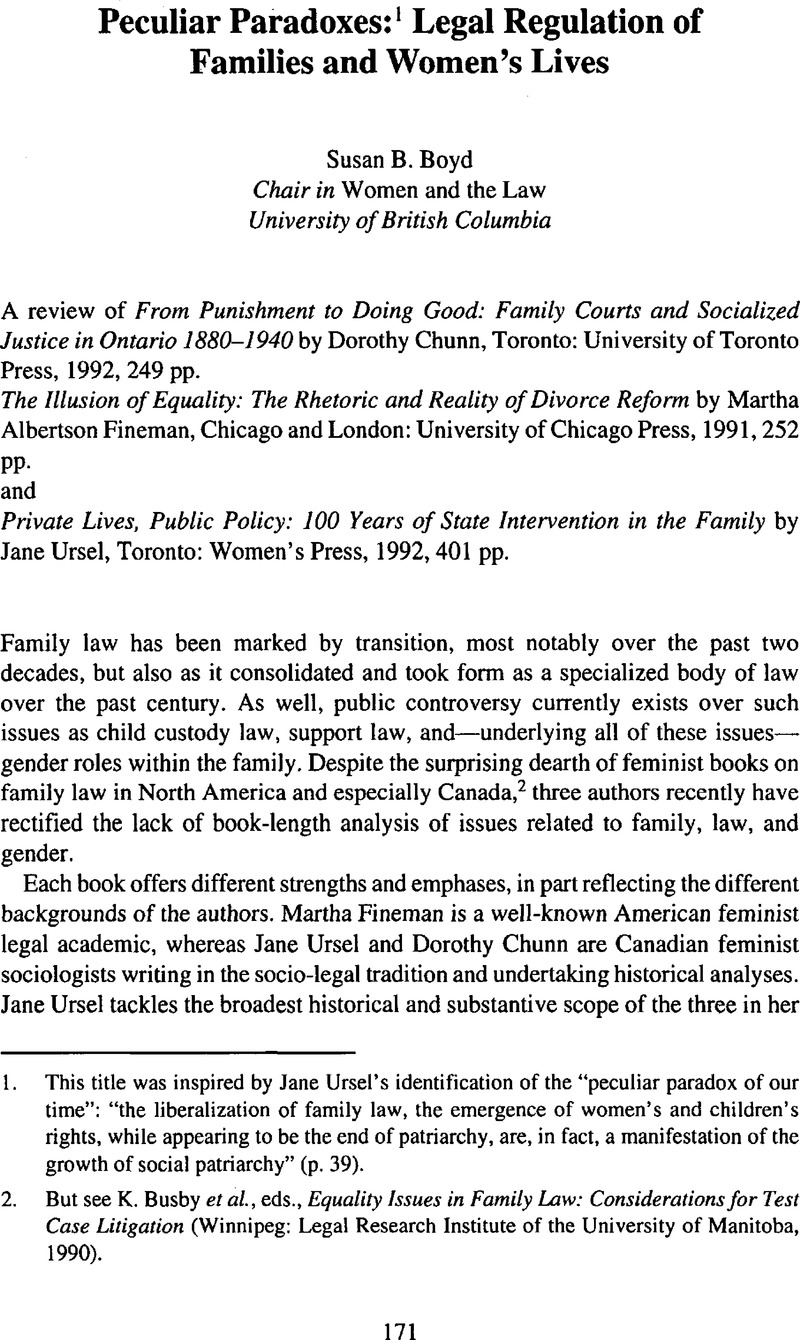No CrossRef data available.
Published online by Cambridge University Press: 18 July 2014

2. But see Busby, K. et al. , eds., Equality Issues in Family Law: Considerations for Test Case Litigation (Winnipeg: Legal Research Institute of the University of Manitoba, 1990)Google Scholar.
3. Ursel and Chunn both look beyond “family law” to examine how welfare laws affected familial relations. Ursel widens the scope further to examine labor law and tax law as well.
4. See Boyd, S. B., “Potentialities and Perils of the Primary Caregiver Presumption” (1990) 7 Can. Fam. L.Q. 1Google Scholar.
5. See, for example, Polikoff, N. D., “This Child Does Have Two Mothers: Redefining Parenthood to Meet the Needs of Children in Lesbian-Mother and Other Nontraditional Families” (1990) 78 Geo. L.J. 459Google Scholar.
6. Gavigan, S. A. M., “Law, Gender and Ideology” in Bayefsky, A., ed., Legal Theory Meets Legal Practice (Edmonton: Academic Printing & Publishing, 1988) 283–95 esp. at 293Google Scholar.
7. In her subsequent work, she has begun to address such issues more directly. See, e.g., Fineman, M., “Images of Mothers in Poverty Discourses” (1991) Duke L.J. 274CrossRefGoogle Scholar.
8. Caring for gay men with AIDS, often abandoned by their biological families, may have provided the most visible model of late.
9. Pickett, E., “Familial Ideology, Family Law and Mediation: Law Casts More than a ‘Shadow’” (1991) 3:1J. of Human Justice 27CrossRefGoogle Scholar.
10. Canadian readers may be frustrated, however, that Fineman's analysis, while having much relevance to Canadian debates, is located within American research and legal developments. A scan of the endnotes revealed only two references to Canadian authors. Neither references were to recent feminist work on family law in Canada, such as the Busby collection, supra note 2, which contains an article by Fineman herself. Fineman is not alone in the somewhat imperialist tendency for American scholars to assume that Canadian scholars should be familiar with American literature, while Americans remain blissfully ignorant of important work to the north of the border. Given her focus on the debates on formal and result equality, it might have been useful to refer to the innovative ways in which Canadian feminist organizations such as LEAF have contributed to the expansion of the concept of equality in the Supreme Court of Canada jurisprudence. This line of thought has been applied in Moge, (1992) 43 R.F.L. (3d) 345Google Scholar and Peter v. Beblow, (1993) 44 R.F.L. (3d) 329, family law cases recently decided by the Supreme Court of Canada.